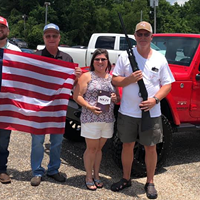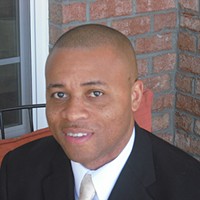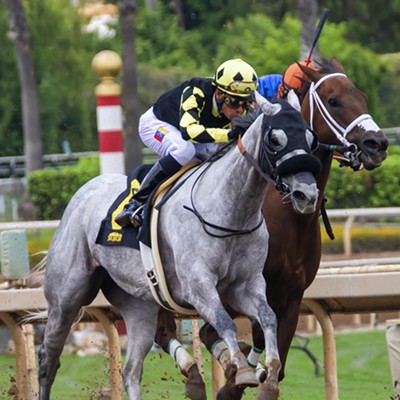Active shooter training prepares county employees for nightmare scenario
Everyone here gets out alive
By Ryan Pitkin @pitkin_ryan"This is the world we now live in." That was my thought as I pulled up to the Department of Social Services in east Charlotte for the first of many classes to be given to Mecklenburg County employees teaching how to best survive an active shooter situation.
The county "strongly encourages" all employees to attend and some city offices are also offering the training, as preparation for this worst-case scenario has unquestionably become a grim necessity in today's society.
Over the last 15 years, school and workplace shootings have become a disturbing but ingrained part of our culture, with 24-hour news stations repeatedly beating the names of mass murderers into our heads and social media serving as a platform for an endless cycle of gun control debates that don't change much of anything from tragic event to tragic event.
Studies differ on the number of active shooter situations and mass shootings that occur in the United States on any given year because the definitions for such events can vary, but according to stats used by the CMPD, the United States has seen 271 active shooter situations in public places like office buildings or schools in the last 52 years (158 of those happening since 2000). In second place is our neighbor to the north, with only 8 active shooters in those same 52 years.
The odds are still miniscule that you or a loved one will be involved in one of these horrific situations, but it has undoubtedly become a problem in this country, and that's where Christopher Kopp comes in.
Kopp is a Charlotte-Mecklenburg police officer (yes, he knows the name Officer Kopp is laughably ironic) who has been teaching classes on how to survive active shooter situations for three years. He has been tasked with teaching these classes to city and county employees; three classes a day in 60 different locations.
After sitting in on one of his first classes, in which he played recordings of Columbine 911 calls and barricaded the doors to the room he was teaching in, Creative Loafing sat down with Kopp to talk guns, media and coining the term "tactical tampon."
Creative Loafing: How did you get interested in this issue?
Officer Kopp: As dark as it sounds, it's something that's always intrigued me since I was in high school. Back in '99, I was a senior in high school when Columbine happened, so it really hit home; being in high school while seeing that happen in a high school setting.
Once I joined the military and then law enforcement, I started seeing the tactical aspect of it all. It was 2013 when I realized there's a big problem with our society and its lack of preparation. That's when I started saying, 'What can I do?' I started to put this class together and seeing how I could make it better. This class has really evolved. I remember when I first started I would just teach what you could Google. Then I started getting some training and starting to do a lot more research in realizing some better tactics that were out there.
Is it upsetting to you that this class even has to exist?
Personally, I have kids that are in school and my wife is a teacher, so my focus was really the schools and I was starting to see how ill prepared that they are. Not only is it necessary, but in society we hide behind the 'Oh, its never going to happen here,' attitude. I see that with my job all the time. People never want to prepare for getting robbed until they're robbed. If we could just reach out to everybody to be more aware before the bad stuff happens, maybe we could prevent some of it.
The goal isn't to scare people. Yes, they're becoming more commonplace in our society, but it's still a very small percentage. People need to stop those couple active shooters that are happening now, minimize the amount of deaths and injuries that we have in these situations and stop publicizing the bad stuff; focus more on someone who was able to save a lot of lives and what tactics they used and that way everyone else can use that and say, 'Hey, that worked for them, that worked in that situation,' and be better prepared.
Many believe that arming everyone will help end these types of situations. You say in your class that you try to talk people out of going after the shooter with a gun but to wait for law enforcement instead. Carrying weapons on city and county property is illegal but would more guns help in other situations?
Not being anti-gun or pro-gun, I ask, 'If you were to have a gun, would you be able to point it at another human being and pull the trigger?' If you can't immediately answer, 'Yes, I can do that,' then all you're doing is bringing a gun where a gun may never have ever been on the scene. Also, it's very complicated with an active shooter situation where if you were a concealed-carry permit owner and you pull out a gun in these events and law enforcement shows up and we see you in civilian clothes holding a gun, that could complicate issues.
I'm never going to advocate for or against having a gun, it's how comfortable do you feel. I have over a decade of firearms training. I've been training other people and I feel comfortable. Don't hide behind a gun thinking that that gun is going to save you unless you really know how to use it.
In your class you advocate for the "Don't Name Them" campaign, in which media ignores the names of mass shooters, something Creative Loafing published a story advocating for following a 2015 shooting in Virginia. How does that help?
We need to stop glorifying the bad people. We understand that ratings are what they are and it is newsworthy and we do need to know about it, but when's the last time you heard the victims mentioned? Beside the day of the shootings, we don't mention the victims again. What if that was a loved one? What if that was you that passed away? Wouldn't you want your name to go on? Instead, we talk about the shooters and we throw their names out there over and over again, and we associate that event with the shooter as opposed to the victims.
We have to look into the shooters to see why they did what they did, from a law enforcement standpoint. When we look into this, we are noticing a trend of wanting to mimic other shooters, and they're learning other shooters' tactics. If we didn't have that information readily available to find and read and see it could prevent that next generation of active shooters.
You voice concerns with certain active-shooter survival teachings like ALICE (Alert, Lockdown, Inform, Counter, Evacuate). What's wrong with what's been taught over the last decade?
With acronyms in general, it's easy to remember a word like ALICE, but the more you complicate things and the more actions you require somebody to do, the harder it is. Most of our workplaces now have these emergency operation plans and if you look at them they're a 30-page document that you have to flip through. Keep the steps simple because under stress common sense goes out the window. If you can't remember the simple things then you won't remember the over-complicated plans that are out there.
What does your advice for an active shooter situation consist of in its simplest form?
Avoid. Barricade. Counter.
Avoid: get out if you can.
Barricade is, in my eyes, the meat and potatoes of the program. A lot of times you're safe where you're at. You just have to understand how to barricade that room and make it a safe room for yourself.
Then the last part is to counter. I'm not asking anybody to fight a gunman, just understand what a gunman is going to do when they come into a room and how to counteract what they expect.
You also advocate for carrying around a homemade kit for treating gunshot wounds, at least in one's car. What does that consist of?
The tactical first aid kit includes a tourniquet; you can get those fairly cheap or you can make them yourselves. A stick and a piece of cloth is a tourniquet, you just need to know how to apply it and understand that you can have a tourniquet on a limb for a few hours and everything is still fine. You're not going to lose a limb because you put on a tourniquet; that's a misconception.
The second thing is sugar; it's a blood-clotting agent. It's not the most sanitary thing in the world but sugar can stop the bleeding in an event like that. Then you get into the "Tactical Tampons." People love hearing about those. I should copyright that term. Tampons and pads are designed to absorb blood. Tampons are the size and shape of a bullet hole that you could insert into a bullet hole if you had one. We're not looking to try to prolong your life for hours here, but we need to stop the bleeding until we can get a Medic in there to treat you properly.
Maybe I'll change the name of the whole presentation to "Active Survival: The Tactical Tampon Story."
You do incorporate a lot of humor into your class. How does that help in such a grim training session?
That's a huge part, because people get workplace-violence classes all the time and they sit there and they listen but they're not really listening. I try to throw humor into it because it's a dark, scary subject. What I want to do is highlight the good things that are going on and that we can win these events. We can empower people with these skills, these options, and a little bit of knowledge, and look at these active shooter events as not something that's an epidemic here in our society but something that – if it were to happen – you would be prepared.
You speak about drilling being a big part of that, like how we use fire drills. Can you explain?
The body will only go where the mind's already been. You have to roleplay these situations in your mind – these 'What If' scenarios – because if you don't, when the event actually happens you're not going to know what to do. If it does happen and you've already played it out in your mind, you'll know where to go and what to do. That's what the shooter is doing. The shooter has played this event out in their mind over and over. They've already visualized it. You need to visualize winning and how you're going to win, and that starts with just looking around.
It's one thing to look at an extension cord, but realize the applications of that. You can wrap it around the door handle or the door closer on the top of the door. But also take it one step further; grab that cord and wrap it around the door. You can barricade a door in 20 seconds if you know what you're doing. Drill it once or twice and don't wait for your business to require mandated drills. Just do it yourself. This is your life and you're the only one who's going to save it.
Speaking of...
-

You Can Do Whatever You Want to Do
Feb 28, 2018 -
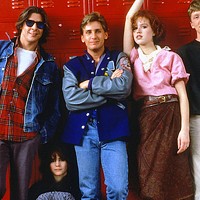
American Made, The Breakfast Club, Kingsman: The Golden Circle among new home entertainment titles
Jan 3, 2018 -

Shots Fired
Feb 10, 2016 - More »
Latest in Newsmakers
More by Ryan Pitkin
-
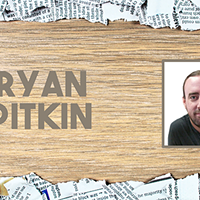
You're the Best... of Charlotte
Oct 27, 2018 -
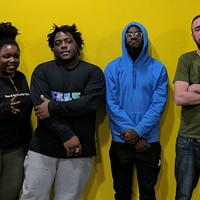
Listen Up: Cuzo Key and FLLS Go 'Universal' on 'Local Vibes'
Oct 25, 2018 -
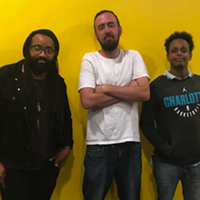
Listen Up: KANG is Back and Bla/Alt on 'Local Vibes'
Oct 18, 2018 - More »
Calendar
-

Wine & Paint @ Blackfinn Ameripub- Ballantyne
-

Face to Face Foundation Gala @ The Revelry North End
-
An Evening With Phil Rosenthal Of "Somebody Feed Phil" @ Knight Theater
-
Kountry Wayne: The King Of Hearts Tour @ Ovens Auditorium
-

Queen Charlotte Fair @ Route 29 Pavilion
-
Canuck in the Queen City 7
A Canadian transplant looks back at her first year as a Charlotte resident
-
Homer's night on the town 41
If you drank a shot with the Knights mascot on Sept. 20, you were basically harboring a fugitive
-
Delic Holdings Inc. Announces Meet DELIC, the Premiere Psychedelic and Wellness Edutainment Event and Expo for Newcomers and Veteran Psychonauts, Announces Initial Speaker Lineup 42


